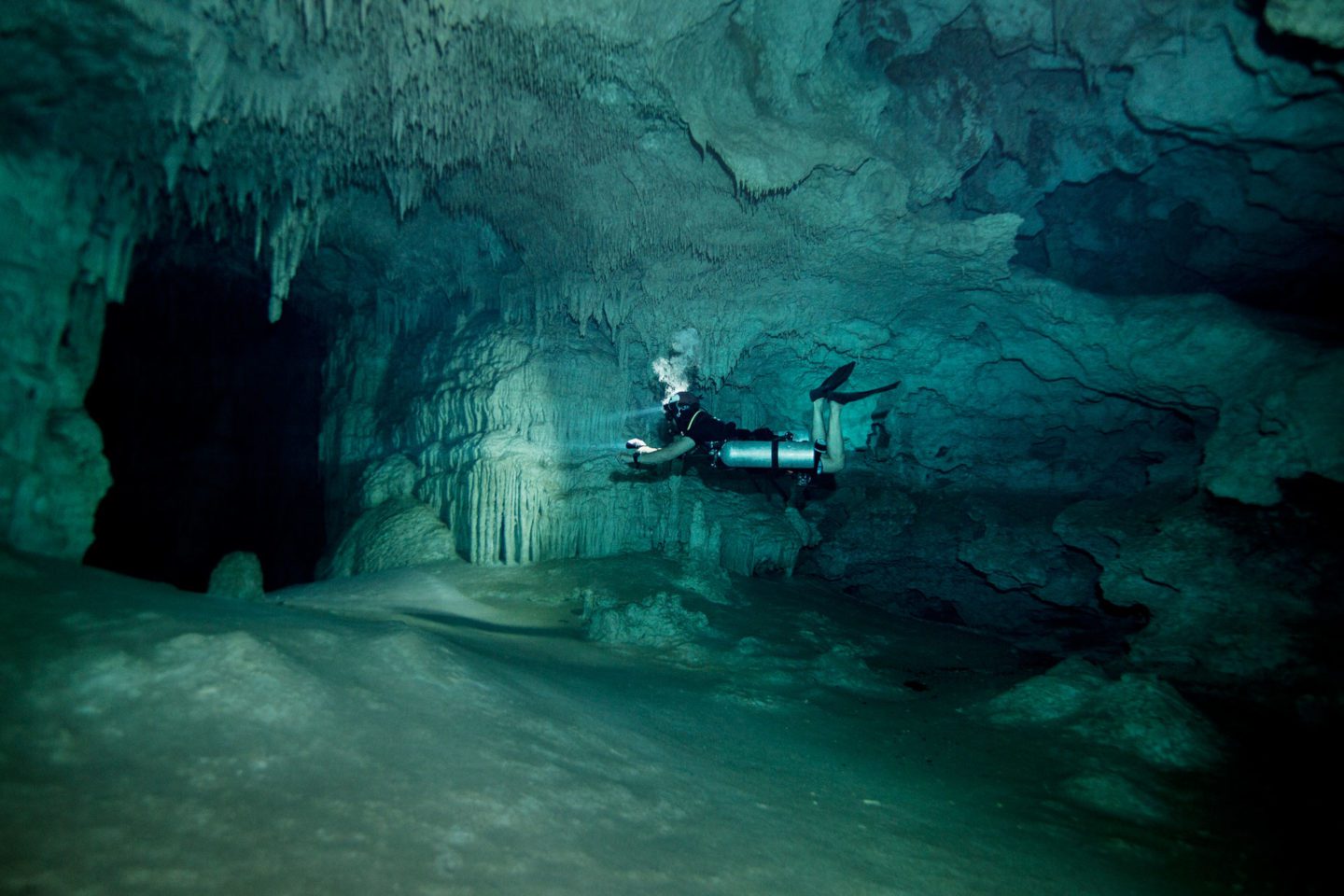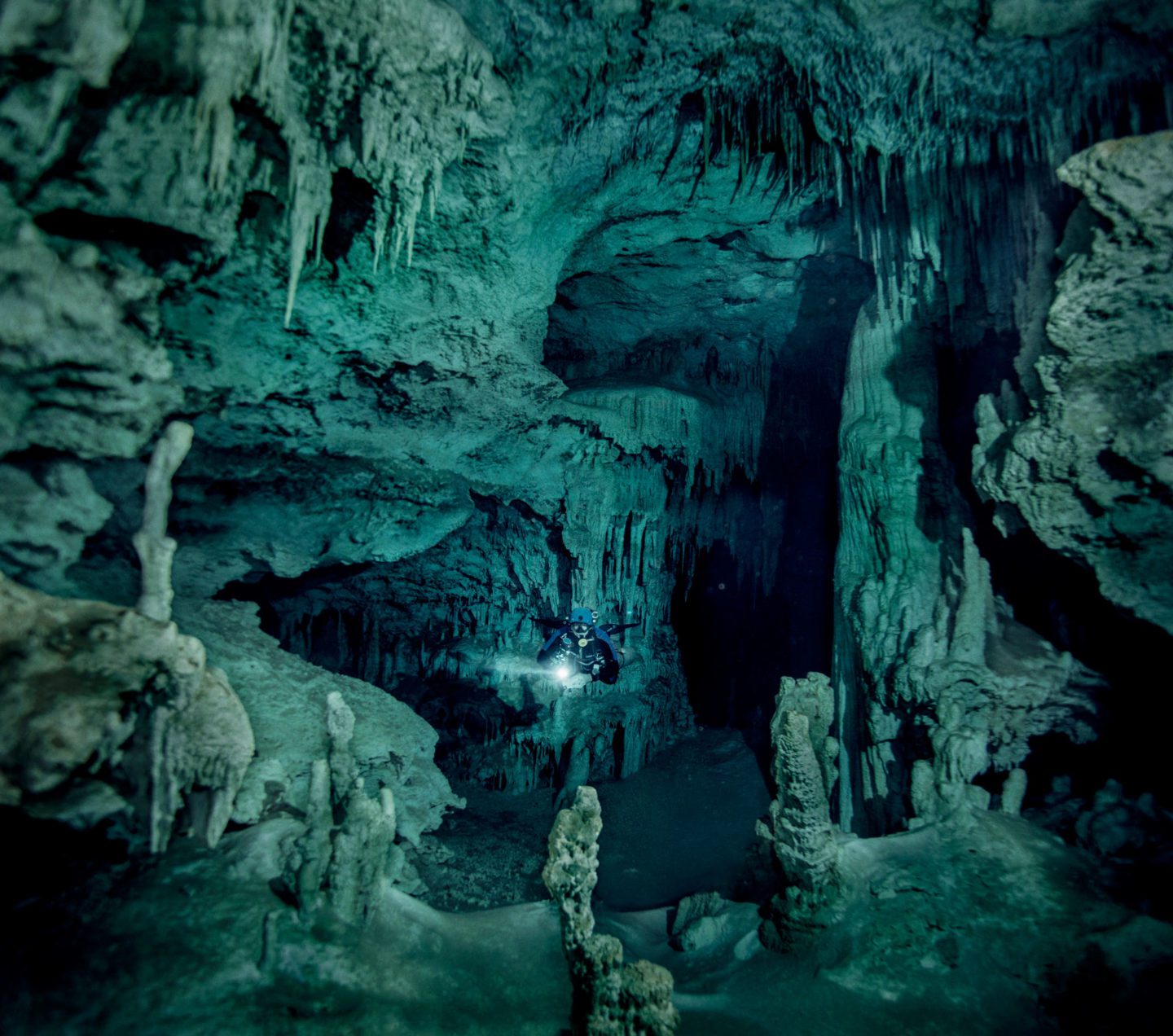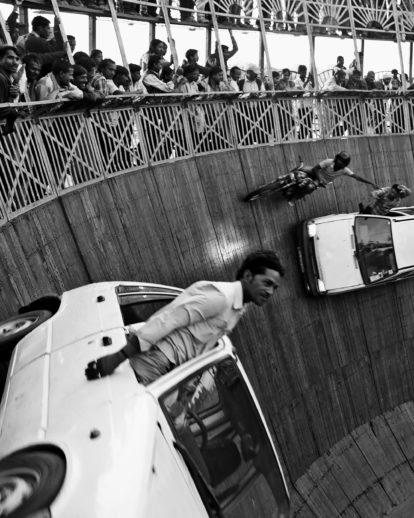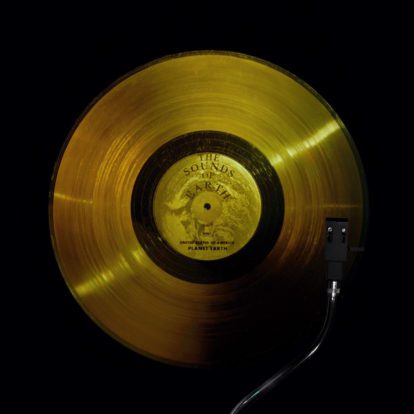At the end of last year my friend Luis Leon got in touch to say that he had discovered a new cenote, a sinkhole that leads to an underwater cave system, near his home on the Yucatán Peninsula of Mexico. I met Luis in 2014 during an ambitious shoot we did in a cenote; I liked the methodical way he worked and we got along well. He agreed that he would let me know if something interesting came up.
This new system, Mul Tun, had never been explored before and, because we had invested a lot of time, energy and money into the project, we kept it to ourselves.
Apart from the Mayan porters who helped carry our equipment, it was just me, Luis and an Italian diver, Alessandro Reato, who trekked an hour and a half through the jungle to the hidden entrance of the cenote. There we checked our equipment, crawled down a slope into a shallow pool, swam through a small gap and the whole system opened up.

Klaus Thymann in the cenote with his camera, in its large underwater housing, and two powerful strobe flashes.
Without any natural light we can only see as far as the beams of our torches and, as well as documenting the expedition, my photography can actually help us explore the cave. I have two powerful underwater flashes attached to the camera’s waterproof housing that illuminate the entire space. After the dive we can examine a section in much greater detail and even find new routes: a picture I took of Alessandro revealed a passage that we had missed, now known as the Klaus Passage, that could link this system to Dos Ojos, the largest cave system in the area.
The Yucatán Peninsula has one of the highest concentrations of cenotes in the world, and many have become tourist attractions and a huge asset to the Mayan community who own the land. Other cenotes, like ours, are less accessible and incredibly technically demanding. The caves are between three and seven metres wide and as we swim we have to be careful not to knock into the stalactites that have taken centuries to form, or to disturb the fine sediment on the cave floor. There’s very little current, or flow, in the caves and if you ‘silt up’, you’re swimming blind and it can take a day to clear. We also often come to smaller gaps and have to unclip our air tanks, which are mounted on our sides rather than on our backs for better manoeuvrability, and push them through in front of us.
Finding the remains of ancient campfires from before the caves flooded is a magical and humbling experience.
Klaus Thymann
You need a particular sensibility to be a cave diver. Perhaps surprisingly, it favours those who are methodical and predictable, and who will always follow protocol rather than take risks. You must never lose sight of the line, for example, which you lay out as you go further into the cave, and that ensures that you don’t get lost and can find your way out if your visibility is compromised. Clear, direct communication – whether it’s with hand signals or the various markers that we attach to the line – is also crucial.
On a psychological level, you have to be comfortable operating in severely confined spaces where often you can’t see an exit. If something goes wrong, you need to know that you can be rational rather than act on instinct and keep calm under pressure. Panicking or losing concentration can be fatal; the day before I landed in Mexico, a Spanish diver had become separated from his group and was found dead, trapped in a crack deep inside the cave. He had panicked, left the line and swum the wrong way.

The entrance to the Mul Tun system was very hard to find – from the hidden opening of the cenote the ground sloped down steeply to an apparently shallow pool, but it was here that the whole system opened up.
Naturally there’s a particular intensity when cave diving that you don’t get when diving in open water, and an adrenaline rush when you go into somewhere that hasn’t been explored before, but if you’re comfortable with the people you are diving with it can be a surprisingly serene and relaxing experience. After a while you begin to flow in sync with one another and you can really take in your surroundings. It is an incredible feeling to squeeze through a small passage to find a cave open up before you, and I am always struck by their beauty – the stalactites and sulphur clouds, the water so clear and so still that the fine dust on the ceiling disturbed by the bubbles from your regulator drifts down like snowflakes.

The divers mount their two air tanks on their sides, rather than their backs, for greater manoeuvrability in the water. Each tank is independent and can be unclipped and pushed ahead of the diver if they need to pass through small gaps.
Contemporary expeditions still involve achieving incredible feats and surviving extreme environments but they almost always follow in the footsteps of others. Today there are few places in the world that haven’t been explored and despite the idea of cave diving sounding like a nightmare for many, I am surprised that more don’t do it. Floating through spaces that have not been seen for thousands of years, finding the remains of ancient campfires from before the caves flooded, is a magical and humbling experience, and one that reminds me how little and insignificant we are.











